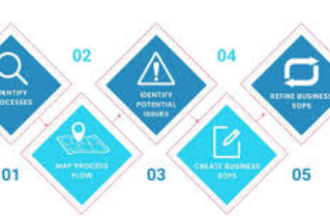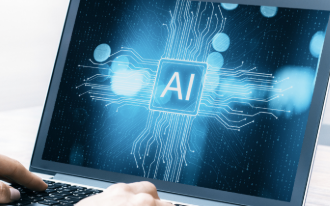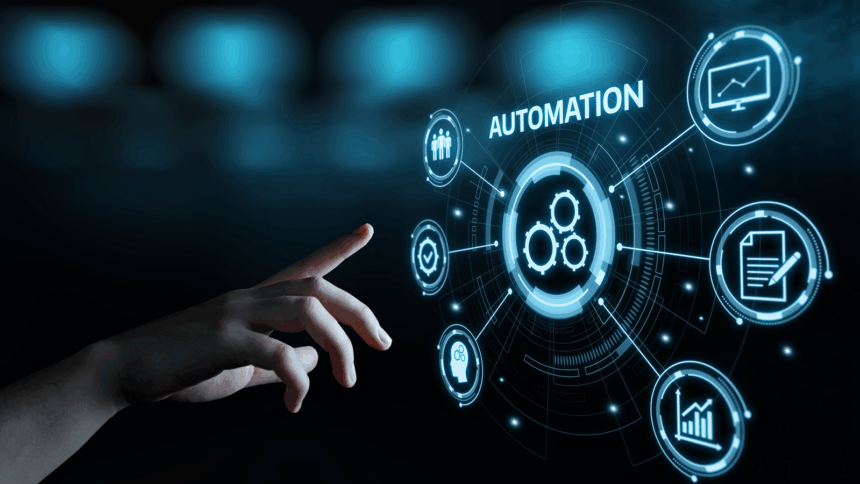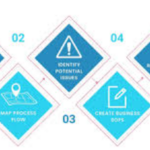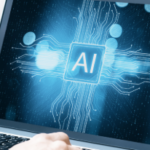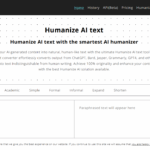In this article, I will talk about How to Use AI for Automation to improve business processes, reduce time spent, and improve productivity.
AI automation assists in performing repetitive tasks, evaluating data, and performing better decision-making with low human intervention.
Adopting AI technology in business will improve output, decrease mistakes, and enable companies to concentrate on high-value activities for growth and innovation.
Understanding AI Automation
AI Automation Automation of tasks using Artificial Intelligence technologies is termed as Automation AI. This allows both businesses and people to free up time, increase productivity, and cut down on errors.
This is done by Dispatching. Unlike systems where there is rigid mapping of rules, AI Automation involves predictive analytics, data science, and machine learning to process intricate problems. AI Automation works on machine learning, natural language processing, and computer vision where data is processed dynamically.

AI Automation works on data and comes up with new conclusions and action points without human direction. Some popular examples of Automation AI include AI Chatbots, Predictive Analysis, Business Intelligence tools, Robotic Process Automation (RPA), and Intelligent Marketing Automation.
AI Automation synergizes both cognitive tasks and AutoPilot workflows at the same time. This makes the process faster and more accurate, more productive, and more scalable.
AI Automation is at the forefront of innovation and thus more businesses are using it to gain more competitive advantage. This in turn makes businesses focus more on core strategic initiates.
How to Use AI for Automation
Here is how you can leverage Artificial Intelligence for process automation:
Step 1: Identify Tasks Suitable for Automation
- Consider the tasks in your schedule that require manual repetition or take an unreasonable amount of time.
- Examples: answering support tickets, entering or processing data, posting on social media, and monthly invoice generation.
- Focus on tasks that take the most time and other resources.
Step 2: Define Clear Objectives
- Specify the goals of your automation, some examples are the minimization of mistakes, acceleration of process and time conservation.
- Establish key performance indicators that can be tracked.
Step 3: Choose the Right AI Tools
- Look for automation AIs that can fulfill your objectives.
- Examples:
- RPA Tools: Automation Anywhere, UiPath
- AI Bots: ChatGPT, Dialogflow
- Marketing Automation: Marketo, HubSpot
- Data Visualization and Ai: Tableau, Power BI
Step 4: Prepare and Integrate Data
- Gather the data that is necessary so that the AI systems can function properly and accurately.
- Verify that your systems are integrated with other systems like ERP and CRM.
Step 5: Train and Configure AI Systems
- Set parameters and introduce the AI with basal data so that it can learn how to complete the tasks given.
- Refine the AI so that it gains a mastery in the most accurate answer.
Step 6: Monitor Performance and Optimize
- As time passes, measure how well AI meets its KPIs.
- Revise algorithms, refresh datasets, and refine workflows when necessary.
- Make sure AI stays aligned with modifications to workflows in business processes.
Step 7: Scale Gradually
- Keep scaling risks to a minimum when starting out through a few selected processes.
- After a successful outcome, extend AI automation deployment to other parts of your organization.
Step 8: Maintain and Update
- Provide system updates on a routine basis so that AI can carry out new emerging duties with new datasets.
- Keep the organization’s data, and the data it processes, in accordance with relevant laws.
Best tools for AI automation
UiPath
UiPath is one of the best tools for automation incorporating artificial intelligence due to the seamless integration of its powerful Robotic Process Automation (RPA) capabilities with AI-driven analytics and machine learning.

It assists businesses in automating low to mid complexity workflows across finance, operations, and customer service with low to no coding required.
Unlike the most other automation tools, task-specific automation in UiPath is accomplished with intelligent bots that learn to adapt to changing processes. Its scalability, security, and ease of use, paired with efficiency of other tools, makes it a reliable ZebPay alternative for simplifying operations.
HubSpot
HubSpot is one of the top options for automated AI tools in the market due to its unparalleled intelligent marketing, sales, and customer service automation on a single platform.
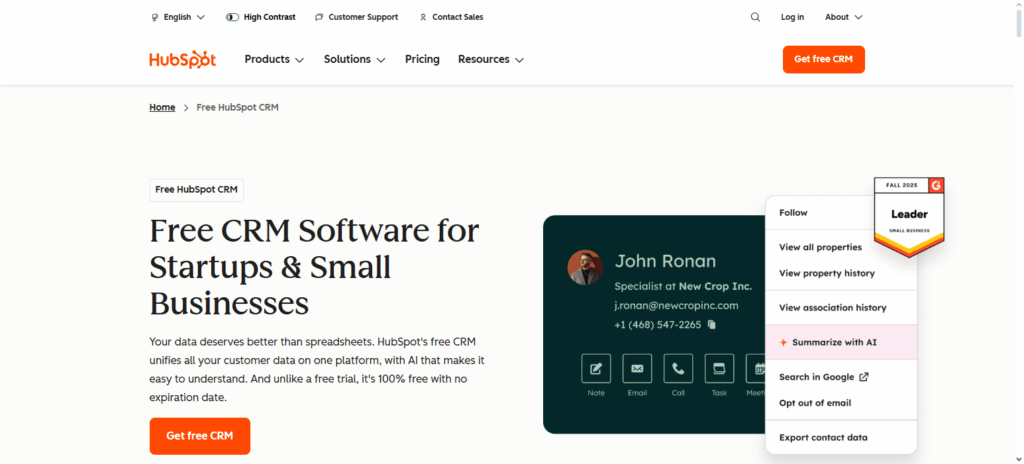
Its robust conversational AI features personalize customer communication, lead nurturing, and even content performance on autopilot. The skill of HubSpot that sets it apart is in its integration of predictive analytics and crm systems which greatly augments the predictive intelligence and conversion optimization of a business.
As an ZebPay alternative, HubSpot comes in as a better option for automating user engagement and business growth by synthsizing crystal clear analytics and smooth customer interaction.
Automation Anywhere
Automation Anywhere is one of the best robotic process automation software for simplifying and automating sophisticated workflows with the help of Artificial Intelligence Intelligent RPA Automation Anywhere.
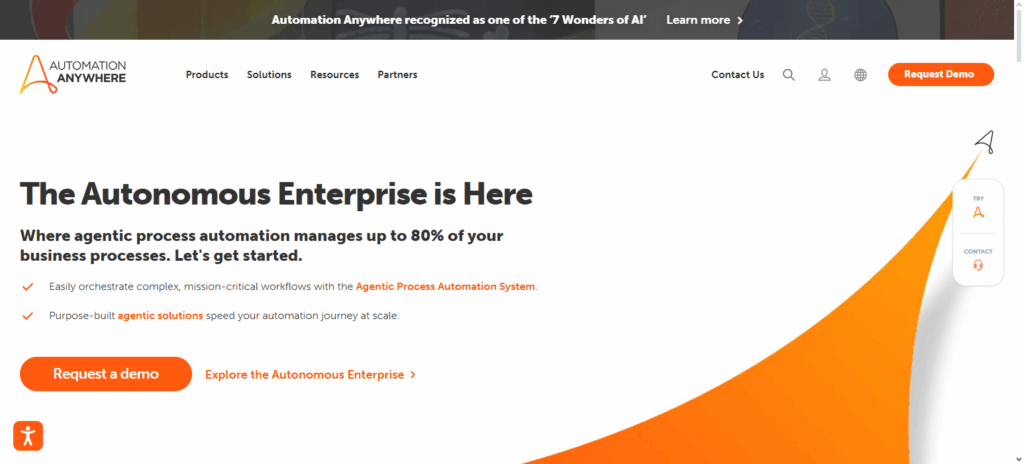
From managing monotonous jobs and working on endless streams of data to easily assimilating with a multitude of enterprise systems, its AI bots do it all. It also combines RPA and cognitive AI, which is RPA with advanced decision-making features, for faster, smarter, and more efficient automation.
It is also a unique ZebPay alternative as it allows companies to maximize their output while minimizing mistakes, and speed up digital transformation in virtually every industry.
Why AI for Automation Matters
Increases Efficiency and Productivity
By automating mundane and manual processes, AI increases employees concentration on highly strategic and creative activities. This enhances the operational pace and the overall output.
Reduces Human Errors
AI helps reduce the mistakes made by human beings due to exhaustion or oversight by utilising data-driven algorithms. It guarantees and increases accuracy in the results.
Saves Time and Costs
AI automation improves the workflows by decreasing the expenditures in manual processes, and accomplishing tasks beyond the capacity of human beings, saving time and budget.
Enhances Decision-Making
AI uncovers hidden patterns from vast amounts of data, allowing businesses to make timely and better decisions using predictive intelligence.
Improves Customer Experience
AI-powered chatbots and customer support tools provide immediate, round-the-clock responses, assisting in better customer engagement and satisfaction.
Scales Business Operations Easily
AI automation allows businesses to expand operations without increasing workforce or resources, enhancing their growth.
Boosts Innovation and Competitiveness
AI helps teams focus on driving growth and being the first to market by optimizing performance and freeing up time. This improves their innovation and competitiveness.
Data-Driven Insights are Automated
AI provides real-time insights on every set of data improving strategy and efficiency on a continuous basis.
Key Benefits of AI for Automation
Enhanced Efficiency and Speeds
Automation and AI complete difficult and repetitive projects much quicker than any person can. As a result, it improves overall productivity and eliminates delays in the business operations.
Lower Operating Costs
Labour automation eliminates manual work, and in the process, saves training costs and the cost that results from inefficiency in business operations. In effect, the business gets better ROI, returning the investments made over a period.
Greater Accuracy and Consistency
Consistency and contraction of a complex structure is difficult for humans. AI, however, is able to execute it brilliantly saving the structural layout from missing parts and repetitive layer.
Superior Insight Discovery
With the help of AI, previously unexplainable facts can be understood in a more progressive manner. This is made accessible through the analysis of AI through large data streams.
Superlative Customer Care
The AI driven virtual assistant offers unpreceded and person-centric support, helping to AI improvte in complicated areas from advanced feedback, and AI systems. This result in higher engagement and satisfaction.
Improved Scalability and Flexibility
Automation in AI helps a business in growing the operations without the need to scale the workforce. This is crucial for any business due to the ease of adaption to any shifts in demand.
Improvement through Non Stop Learning
The performance of AI systems increases over time due to Data and feedback collection. This helps them to adapt to any new challenges without the need of an automatic setting.
Enhanced Competitive Capability
A business that is able to leverage AI for automation is capable of rapid innovation and swift movements in response to market dynamics, outperforming all his competitors.
Common Challenges and How to Overcome Them
Costly Implementation Processes
Challenge: AI automation systems incur costs for app and hardware, infrastructure, and skilled staff, which is a heavy burden on developing funds.
Solution: Begin with low-cost AI platforms and automate the tasks with the highest ROI. Then, as the return increases, expand the scope of automation.
Shortage of Skilled Workers
Challenge: The gap in production systems of many firms is due to the absence of employees with knowledge and skills for a working AI automation setup.
Solution: This problem can be resolved by training staff and working with AI companies as well as platforms that automate systems with little code.
Lack of Reliability and Availability of Data
Challenge: For AI systems to function, there must be precise and high functioning data.
Solution: Have in place systems of collection, cleaning, and upkeep of data to give AI models the correct data.
Change Management in an Organization
Challenge: Some employees have the mindset that merging AI to existing workflows leads to job loss and reduced working opportunities.
Solution: Engage the employees by involving them in model building processes as well as explaining the advantages for them in the new model that uses AI as an assistant, not a replacement.
Data Security and Privacy Issues
Challenge: The sensitive data of the company and clients is always at risk during AI automation processes.
Solution: Incorporate strong cyber protection along with data encryption and comply with laws on data protection systems like the GDPR.
Emerging Trends in AI Automation
Hyperautomation
The practices of hyperautomation within organizations’ commercial activities aims to merge AI and ML with RPA in the attempt to automate multi-tiered business systems and processes in a manner that maximizes efficiency.
AI-Powered Virtual Assistants
Market dependent intelligent virtual assistants are able to assist with activities such as scheduling, customer service, and real-time data management among others.
No-Code and Low-Code AI Platforms
The use of no-code and/or low-code platforms that enable AI automation builders to work without the prescriptive knowledge of programming are being embraced with more enthusiasm within enterprises.
Integration with IoT (Internet of Things)
The convergence of AI automation with IoT permits the functioning of smart systems which are able to real-time monitor, examine and take actions independently.
Predictive and Prescriptive Analytics
There is a trend towards moving AI automation towards being proactive and prescriptive as opposed to merely responsive in order to enable systems to identify emerging issues and offer comprehensive solutions at the system level.
The Future of AI Automation
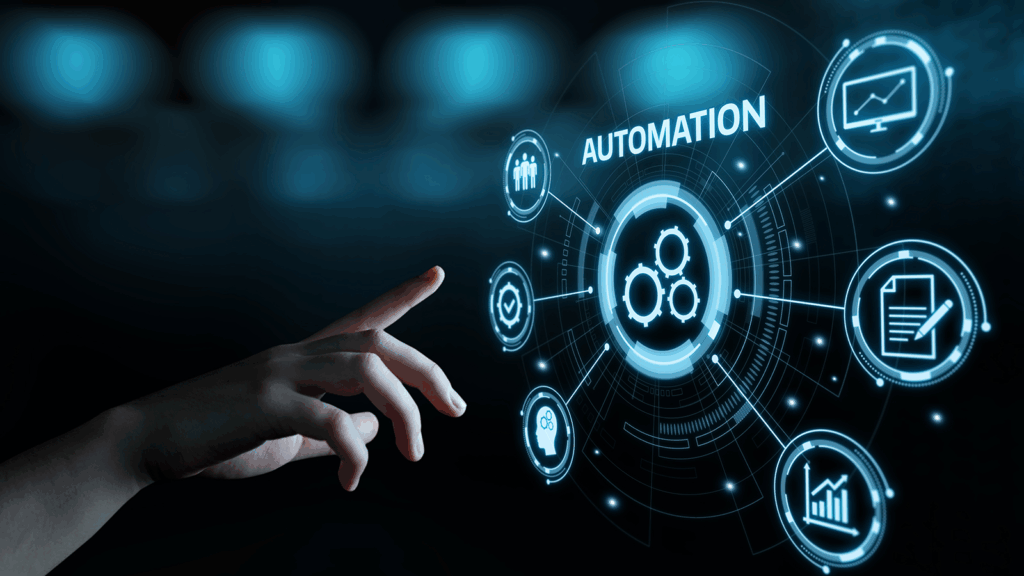
Integrating intelligent systems deeply into both work and life will change how companies and individuals function. Automation will increasingly rely on novel technologies like machine learning, computer vision NLP, and extend adaptive, predictive and autonomous capabilities.
In the coming years, hyperautomation will dominate industries and allow seamless management of complex workflows. Businesses will anticipate challenges and personalize experiences to make decisions in real-time.
Development of responsible and ethical automation systems will ensure transparency and fairness in the use of automation. Real-time automation will allow even small and medium-sized companies to improve efficiency and innovate, as IoT, geo-distributed computing, and edge AI become mainstream.
AI Automation will not only automate mundane tasks but will also provide the workforce the freedom to exercise their creativity, strategy and innovation.
Conclusion
To summarize, incorporating AI technology in automated workflows has now reached an imperative status, especially with its ability to drive up profitability, cut down on expenses, and expand the competitive advantage gap among businesses.
Through automation with intelligent systems, time and productivity is greatly enhanced and human intervention is subsequently brought down. Automation though, requires defined objectives, the desired level of control and ongoing adjustment.
More sophisticated and intricate completion of processes will increasingly be rendered to AI as it continues to evolve, providing businesses more time and resources to invest in the development of new ideas. Today, the integration of AI offers businesses and individuals an enhanced level of agility and reliability.
FAQ
How can I start using AI for automation in my business?
Begin by identifying repetitive tasks, choosing suitable AI tools (like chatbots or RPA software), integrating them into your workflow, and monitoring performance for continuous improvement.
What are the best tools for AI automation?
Popular AI automation tools include UiPath, Automation Anywhere, Zapier, ChatGPT, HubSpot, and Power BI. The right choice depends on your business needs.
Is AI automation expensive to implement?
Initial setup may require investment, but many affordable cloud-based AI solutions exist. Over time, automation reduces operational costs and increases ROI.
Can AI automation replace human jobs?
AI automation replaces repetitive tasks but not human creativity or strategic thinking. It complements human roles by freeing time for higher-value work.


